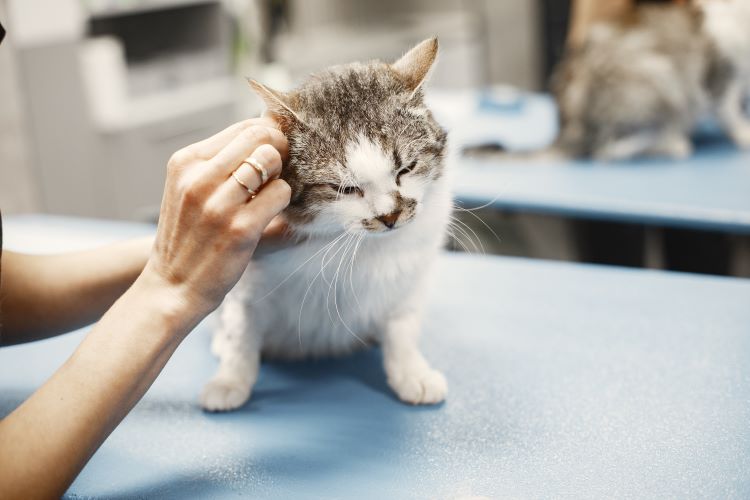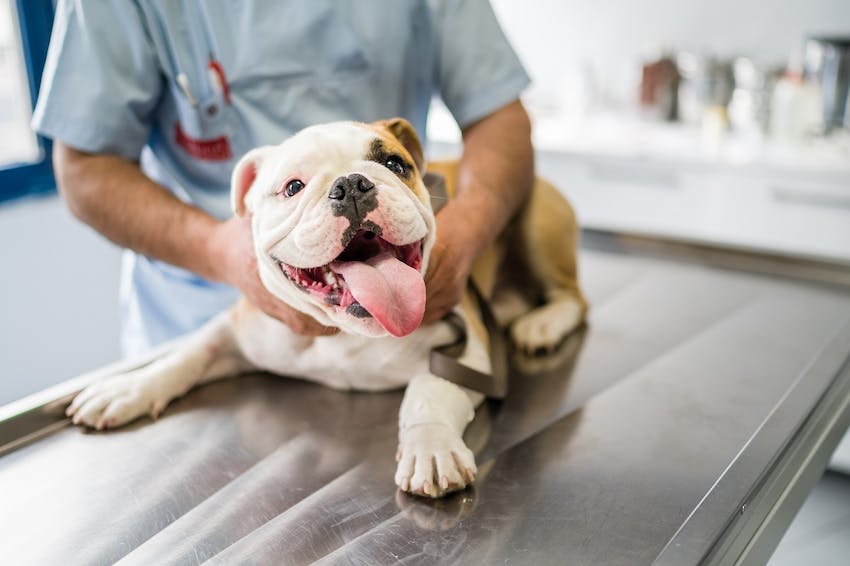Ready to help treat your pet to a healthy life?
5 Common Pet Insurance Myths Debunked
By : Brianna Gunter | Updated Dec 12, 2024

You’ve heard of pet insurance, but do you really know what it is and how it works? Myths about pet insurance are prevalent, and they can lead to confusion and hesitation about signing up for coverage.
Before we dive into the misconceptions, it’s important to note that pet insurance has become an increasingly visible and common part of responsible dog and cat ownership. As veterinary care has become more advanced and pets are able to live longer, healthier lives, treatment costs have risen. A 2024 MarketWatch survey showed that 33% of pet owners avoid seeking veterinary care due to sticker shock and fears of high bills. The same survey meanwhile shows that owners with pet insurance are less likely to avoid veterinary visits, and most do not regret having a policy.
But with the rise of pet insurance have come misunderstandings and distortion about how these policies work. In order to help you make an informed decision for your budget and your pet’s health needs, let’s go over some common pet insurance myths and see how reality stacks up.
Myth 1: Pet insurance companies are all the same
It may seem like all pet health insurance companies are pretty much the same, offering reimbursement for your pet’s veterinary expenses. The reality, however, is that coverage plans vary greatly between providers. In order to make sure you’re getting the best value for your budget and your pet’s needs, it’s crucial to compare pet insurance providers and look at some key differentiators with what they offer:
- Coverage options and exclusions — A lot of pet insurers offer different coverage options (usually with add-ons for additional costs) and dictate which conditions and/or treatments they will and will not cover. It’s worth noting that most companies do not cover pre-existing conditions.
- Rates — The monthly rate or “premium” is how much you pay to keep your insurance coverage active every month. For some companies, this can be converted to a yearly rate. However, costs vary greatly between providers and can also depend on location and the individual pet.
- Deductibles — A deductible is how much you’ll have to pay out of pocket before your pet’s coverage actually kicks in, and this amount can be anywhere from zero to hundreds of dollars.
- Payout process — A “payout” is how much of your pet’s veterinary bill the insurer will cover. Most companies work on a reimbursement model, which means you’ll pay the bill upfront and then wait for your insurer to send a check to you. Trupanion stands out here by being able to pay veterinarians directly at time of checkout from your pet’s appointment.
- Payout limits — Pet insurance policies often come with annual limits or maximum lifetime payouts, and sometimes there are payout limits per condition. The rules here vary significantly between companies and plans. Trupanion, for example, does not have payout limits.
- Waiting periods — The vast majority of insurers have waiting periods or delays in when a pet’s coverage becomes effective. These can vary widely between policies and even certain conditions.
- Customer service availability — Nearly all pet insurance companies have specific business hours when members can reach customer service. Trupanion is among the only providers with 24/7 access, 365 days a year.
Not sure what kind of plan would be the best fit for your pet? Asking these pet insurance questions can help.
Myth 2: Only basic veterinary care is covered
Another common pet insurance myth is that only basic veterinary care like routine checkups and dental cleanings are covered, and pet owners then find themselves out of luck when a surprise health condition comes up. This is sometimes the case, but the key factor to look at is whether the plan is wellness coverage or pet medical insurance. Wellness coverage indeed only covers routine “wellness” veterinary costs and typically does not cover bigger ticket items like serious illness or an accident.
Pet medical insurance, like Trupanion, meanwhile does not usually cover wellness care (a.k.a. things pet owners can plan for). Instead, it covers new, unexpected health conditions and accidents — the things pet owners can’t plan for and often come with high treatment costs. Here’s just a short list of the types of health conditions and treatment costs Trupanion covers:
- Injuries (including bites, broken bones, and more)
- Cancer
- Diabetes
- Heart disease
- Hip dysplasia
- Dental disease
- Hyperthyroidism
- Vomiting and diarrhea
- Foreign material ingestion / intoxication
- Urinary tract infection
- Hereditary and congenital conditions
- Unidentified issues, even if your dog or cat doesn’t have an official diagnosis yet

Myth 3: Young, healthy pets don’t need insurance
While it's true that young and healthy pets are less likely to suffer from certain health conditions, that doesn’t mean they don't need pet insurance. In fact, the best time to enroll pets is while they are young, before they’ve developed any chronic conditions or need significant care. There are several reasons for this:
- Young pets are less likely to have pre-existing conditions (starting coverage early means more conditions covered throughout their lifetime).
- Unforeseen accidents and illnesses can occur at any age.
- Early coverage helps set dogs and cats up for lifelong quality health care.
- Having pet insurance coverage provides peace of mind, no matter how old your pet is.
- Pet insurance allows you to better plan and budget for your pet’s care.
- Pet insurance rates are often lower for young and healthy pets, so starting early can be a financially prudent decision.
Puppies and kittens can still require costly veterinary treatment on their own, and there’s no predicting when or where an emergency will arise. Case in point: in 2023, Trupanion paid out a whopping $57,044.57 for a puppy under one year of age, in a single claim. As of the end of 2024, Trupanion has paid out more than $3 billion in claims and counting.
Myth 4: Pet insurance only works with specific veterinarians
Many people believe that pet medical insurance works the same as human health insurance, meaning you’re limited to a network of providers. But unlike human coverage, pet health insurance plans can be surprisingly flexible. While some (typically wellness plans) require you to stick with certain providers or a chain of veterinary hospitals, others allow you the freedom to take your pet wherever they need treatment.
The best pet insurers are designed to provide coverage for your pet’s medical expenses, regardless of where those expenses occur. With Trupanion, for example, you’re able to take your dog or cat to any licensed veterinarian, emergency animal hospital, or specialist.
Likewise, some pet medical insurance providers may have preferred or in-network veterinarians and/or hospitals. Using these may help expedite claims processing or come with other benefits, but it is not a requirement. Either way, it’s important to read the fine print before signing up with any provider to avoid surprises and have a smooth experience.

Myth 5: A pet savings account is a cheaper option
Pet owners worried about veterinary costs may balk at pet insurance due to the rates. In recent years, the idea of setting up a savings account for pet care has gained traction as an alternative to pet insurance coverage, but the truth is that doing so may not actually be the more affordable option.
Whether a pet savings account or pet insurance is cheaper depends on various factors, including your pet's health, the level of care they require, and your ability to save consistently. A pet savings account does not require you to pay monthly rates, but it will mean having to pay for your pet’s veterinary care entirely out of your own pocket. If your pet is suddenly in a serious accident or diagnosed with an illness that requires immediate treatment, you may not have time to save up enough to afford their care. Pet insurance meanwhile does not require a large amount of savings upfront (or ever, really), so it’s considered the more affordable option by many pet parents.
It’s worth noting that because veterinary expenses often vary by breed and location, the best pet insurance providers take that into account and tailor coverage costs accordingly. If you’re considering protecting your dog or cat with pet insurance, the best place to start is by getting a free quote.
